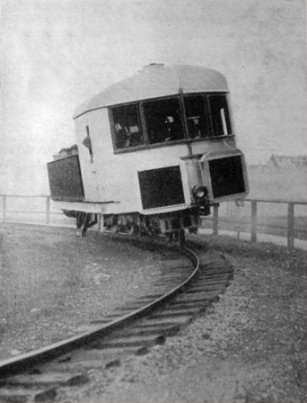Off topic discourse and banter encouraged.
-
neufer
- Vacationer at Tralfamadore
- Posts: 18805
- Joined: Mon Jan 21, 2008 1:57 pm
- Location: Alexandria, Virginia
Post
by neufer » Tue Dec 07, 2010 4:06 pm
http://en.wikipedia.org/wiki/Marge_vs._the_Monorail wrote:
 Homer: "I call the big one Bitey"
Homer: "I call the big one Bitey"
<<"Marge vs. the Monorail" is quite often rated as being among the top Simpsons episodes. The BBC website says "An unsurpassed episode. It's hard to know where to start dishing out the praise - Leonard Nimoy's guest appearance, the Monorail song, Marge's narration, the truck full of popcorn..." Vanity Fair called it the third best episode of the show, due to, "An amazing musical number; Leonard Nimoy in a random guest appearance... Besides being replete with excellent jokes, this episode reveals the town's mob mentality and its collective lack of reason.
Leonard Nimoy was not originally considered for the role as the celebrity at the maiden voyage of the monorail, as the writing staff did not think he would accept, because William Shatner had previously turned the show down. Instead, George Takei was asked to guest star as he had done the show once before. After demanding several script changes, Takei declined, saying he did not want to make fun of public transportation as he was a member of the board of directors of the Southern California Rapid Transit District. As a result, the staff went to Nimoy, who accepted.
"This is the episode that defines Springfield more than any other." Conan O'Brien has said that of all the episodes he wrote, this is his favorite.
Homer's lines "I call the big one Bitey" and "doughnuts, is there anything they can't do?" are among Matt Groening's favorite Simpsons lines.>>
http://en.wikipedia.org/wiki/Monorail wrote:

Gyroscopically balanced monorail (1907) by Brennan & Scherl

Patiala 0-3-0 steam monorail locomotive
at the Indian National Railway Museum
<<The first monorail was made in Russia in 1820 by Ivan Elmanov. Attempts at creating monorail alternatives to conventional railways have been made since the early part of the 19th century. The earliest patent was taken out by Henry Palmer in the UK in 1821, and the design was employed at Deptford Dockyard in South-East London, and a short line for moving stone from a quarry near Cheshunt, Hertfordshire to the River Lea. The Cheshunt line is notable as it was the world's first monorail to carry passengers, as well as the first railway line to be opened in Hertfordshire.
Around 1879 a "one-rail" system was proposed independently by Haddon and by Stringfellow, which used an inverted "/\" rail. The system was intended for military use, but was also seen to have civilian use as a "cheap railway."
Early designs centred on use of a double-flanged single metal rail alternative to the double rail of conventional railways. Wheels on this rail would both guide and support the monorail car. A surviving suspended version is the Wuppertal monorail. Into the 1900s, Gyro monorails, with cars gyroscopically balanced on top of a single rail, were tested, but never developed beyond the prototype stage. The Ewing System, used in the Patiala State Monorail Trainways in Punjab, India, relies on a hybrid model with a load-bearing single rail and an external wheel for balance. One of the first systems put into practical use was that of French engineer Charles Lartigue, who built a monorail line between Ballybunion and Listowel in Ireland, which was opened in 1888 and closed in 1924 (due to damage from Ireland's Civil War). The Lartigue system uses a load-bearing single rail and two lower, external rails for balance, the three carried on triangular supports.>>
Art Neuendorffer


